- Trends in the development of Retail in general
- Rapid growth Retail
- More Focus on Conversion Rate Optimization (CRO)
- Manufacturers become retailers (D2C)
- Niche narrowing
- Development of mobile commerce
- Development of omnichannel retail
- Implement CDP instead of CRM
- Development of social commerce
- Using artificial intelligence to personalize and automate sales
- Focus on the younger generation
- Conclusion
Geniusee team designs and develops retail projects, so we constantly monitor trends in this industry. In this article, we will share our observations about the retail industry outlook and trends that will be relevant in the next couple of years.
You can ask, why do I need to follow retail trends? The answer is obvious — to be successful tomorrow, focus on tomorrow today. Considering changes in consumer behavior and technology, you will be able to:
- quickly adapt to changes;
- anticipate customer expectations;
- gain competitive advantage.
When choosing retail trends for this article, we realized that many of them did not originate today, but the degree of their relevance is gaining momentum every year.
In this article:
Trends in the development of Retail in general
1. Rapid growth of retail
We have felt this trend in the retail market firsthand — after the pandemic, we have increased the number of new customers for the development and support of online retail stores many times over. According to Oberlo, global online sales will be $4.9 trillion in 2021 and $6.4 trillion by 2024.
Until 2020, the development of retail was influenced by the increase in the number of active users, the improvement of their shopping experience, the increase in trust in online stores, and the investments of large players in advertising and infrastructure.
The pandemic added to these factors:
- restriction on offline purchases;
- the transition to remote work and the associated outflow of the population from large cities;
- increased demand for food delivery.
Consumers had no choice but to buy goods in online stores. During the lockdown, many have become accustomed to such shopping.
If you are still considering whether to start a Retail business, then the prospects for new players are very bright, but there are nuances that we will discuss below.
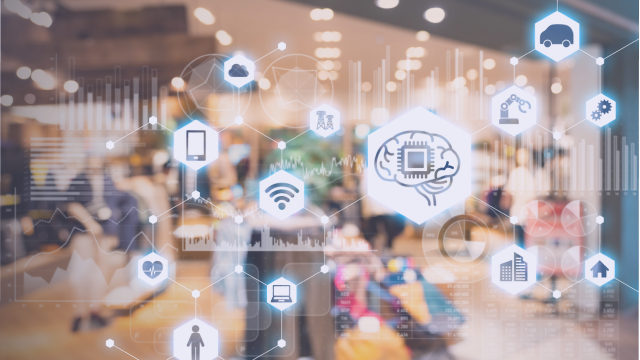
By the way...
FacePay, IoT, VR And More: Technologies That Change Retail
Technological solutions open up new opportunities for retailers. Implement them first with Geniusee.
Let's see2. More Focus on Conversion Rate Optimization (CRO)
During the pandemic, online has become the only sales channel, so retailers have begun to be more conscious about the development of online stores. Competition in the retail industry is constantly growing — it is important to squeeze the maximum out of the attracted traffic, which is possible with constant conversion optimization.
CRO (conversion rate optimization) is the optimal solution. It is less risky than a complete redesign since every change in the interface is based not on guesswork and heuristics of judgment, but research and tests.
For example, here is our own CRO algorithm, which we have developed over the years of cooperation with retail projects:
- Setting up data collection tools (Google Analytics/Enhanced E-commerce, Hotjar) or checking their correct operation.
- Analysis of web analytics data and target audience. If necessary, conduct additional UX research — moderated and unmoderated tests, CustDev, competitive analysis, and others. Identification of relationships between data in qualitative and quantitative research.
- Collecting insights, scoring ideas, and hypotheses.
- Preparation of an optimization plan for testing.
- Split testing. Evaluation of the result and description of the case in the Knowledge Base.
- Control of the implementation of the winning option.
3. Manufacturers become retailers (D2C)
D2C — sale to the end consumer without intermediaries and dealers. This global trend that started relatively recently and is only gaining momentum.
Manufacturers realized that the future of the market is in a direct struggle for a buyer without intermediaries. And for this, it is important to know your customer, control all stages of interaction with him, communicate directly and strengthen the emotional connection. This allows you to collect feedback from users and constantly improve the product quickly.
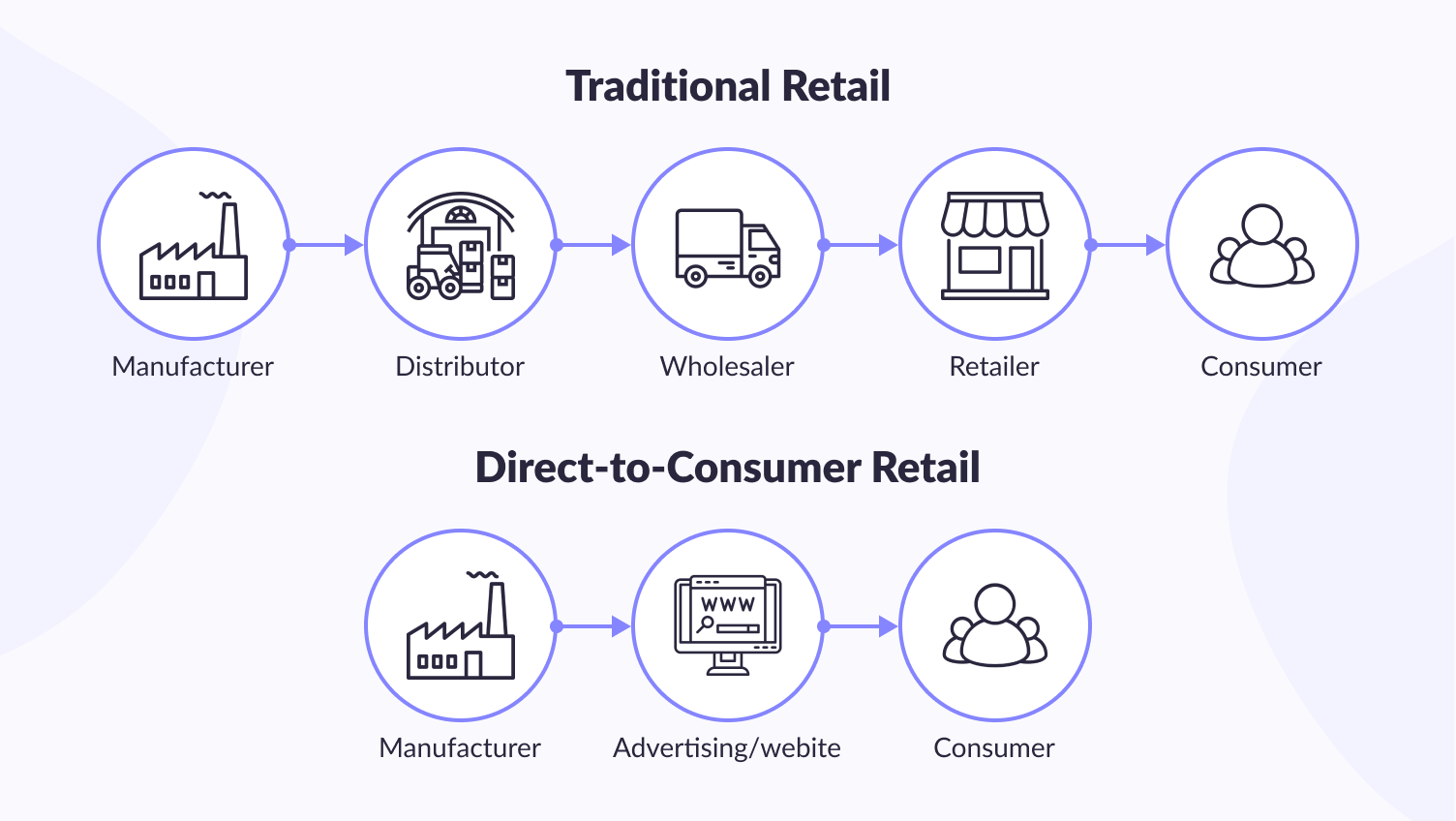
Now manufacturers are adopting the experience of retail, which has long been building communication with the consumer directly through online trading, launching their online stores, and deploying storefronts on marketplaces.
In order to withstand the struggle with manufacturers and marketplaces, we recommend niching by building an assortment around a narrow target audience or product category. At the same time, it is important:
- build a community around the brand;
- regularly generate expert content and stimulate the creation of user-generated content;
- collect feedback;
- provide added value;
- implement personalization, in terms of the service and through the CRM strategy.
4. Niche narrowing
Retailers have begun to realize the benefits of specializing in a particular niche. Soon, more and more online stores will become niche.
Today's consumer comes to the online store not just for a specific product but for knowledge, information about the possibilities of new products, and choice. The sales funnel should include stages for familiarizing consumers with products. And this means that you need to know your assortment thoroughly. Of course, it is easier to become an expert within one niche.
Here are a few more arguments in favor of a niche online store:
- easier to maintain the quality of the assortment;
- you can carefully study and understand the target audience, implement personalization;
- it is easier to provide a good shopping experience — in addition to providing comprehensive information about products; you can implement functionality that is important for the audience;
- higher customer satisfaction and loyalty due to a wide range of certain products and the opportunity to get expert advice;
- profitable from the point of view of marketing - it is cheaper to promote one thing;
- it is easier to compete — in a narrow niche, you can position yourself as a market leader;
- it is easier to advance in search engines for long niche phrases.


Thank you for Subscription!
5. Development of mobile commerce
The retail growth is partly driven by an increase in the use of mobile devices. Shoppers are increasingly shopping on smartphones or tablets. Oberlo predicts that global mobile shopping will grow to $3.79 trillion. According to Statista, by the end of 2021, about 73% of purchases in the world were made from mobile devices.
As confidence in online shopping grows, so does confidence in mobile ordering. Mobile commerce is also developing due to an increase in the number of young consumers. Mobile devices are used to explore products and reviews, even if you plan to purchase from a stationary device.
It is essential to understand that simply adapting an online store for smartphones is no longer enough. When a customer randomly chooses a product on a smartphone (in transport, during a pause at work, or in line), but buys in a relaxed atmosphere from a computer at home, will occur more and more often. Therefore, you will have to focus on creating a seamless shopping experience.
How to use this Retail trend:
- profess a mobile-first approach to development - the interface and functionality of the site must be initially adapted for smartphones;
- consider the features of purchases from mobile devices;
- make sure that the online store is optimized for smartphones - we wrote about optimizing listings and product cards, navigation, search, and filtering;
- conduct usability testing and ask customers whether it is convenient for them to make purchases from a smartphone in your online store;
- allow paying for goods using Apple Pay, Google Pay, and QR codes.
Custom mobile development
Get exactly what you need and conquer the market with Geniusee experts.
6. Development of omnichannel retail
Buyers are characterized by ROPO behavior — searching on the Internet, and then buying offline, and vice versa. Today, searching on the Internet is not limited to studying the site — someone is subscribed to the brand's social networks and studies them, someone uses applications, and someone prefers to compare prices on Google immediately.
Omnichannel is far from a fresh trend, but the pandemic has given a strong enough impetus to its development. One of the trends in Retail has become trading literally everywhere.
It is crucial not only to provide the audience with maximum points of contact with the brand but also to synchronize the digital channels with each other, maintaining the unity of communications and combining different channels into one system for a continuous customer experience.
In the near future, omnichannel sales will gain momentum — despite the fact that many projects avoid them. Managing such sales is not easy, but they give a competitive advantage, increase recognition and loyalty, and help increase conversion and income.
What to do:
- research your customers and build a presence in the channels they visit first;
- gradually organize retail and wholesale sales through an online store, social networks, marketplaces, offline points, and other digital platforms;
- combine all channels into one system.
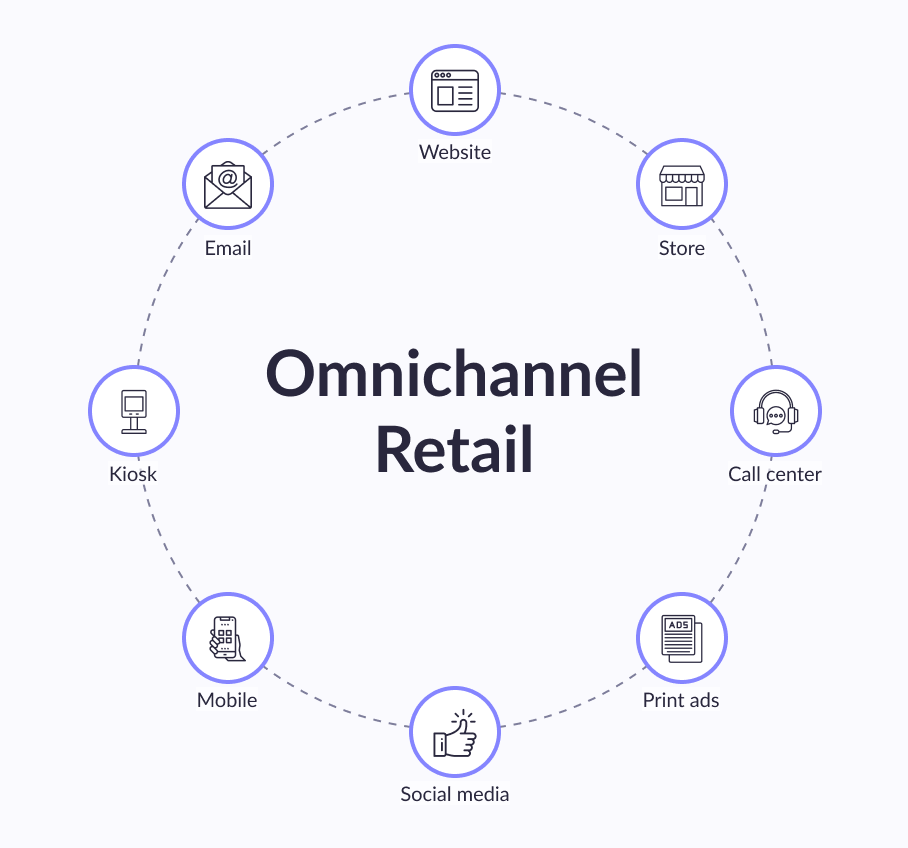
7. Implement CDP instead of CRM
CDP combines different channels into one whole within the framework of omnichannel. Acquiring new customers is expensive, especially if they only make one purchase. It is more profitable to retain and stimulate regular customers. To do this, online stores create customer avatars that describe not only socio-demographic characteristics but also behavioral patterns on different sites.
CRM systems can record every interaction with a client but it will not work to collect a lot of data from different sources. CDP platforms (Customer Data Platforms), such as mindbox, combine data from different sources into a single profile and build end-to-end communication through channels. This allows you to increase your income significantly.
8. Development of social commerce
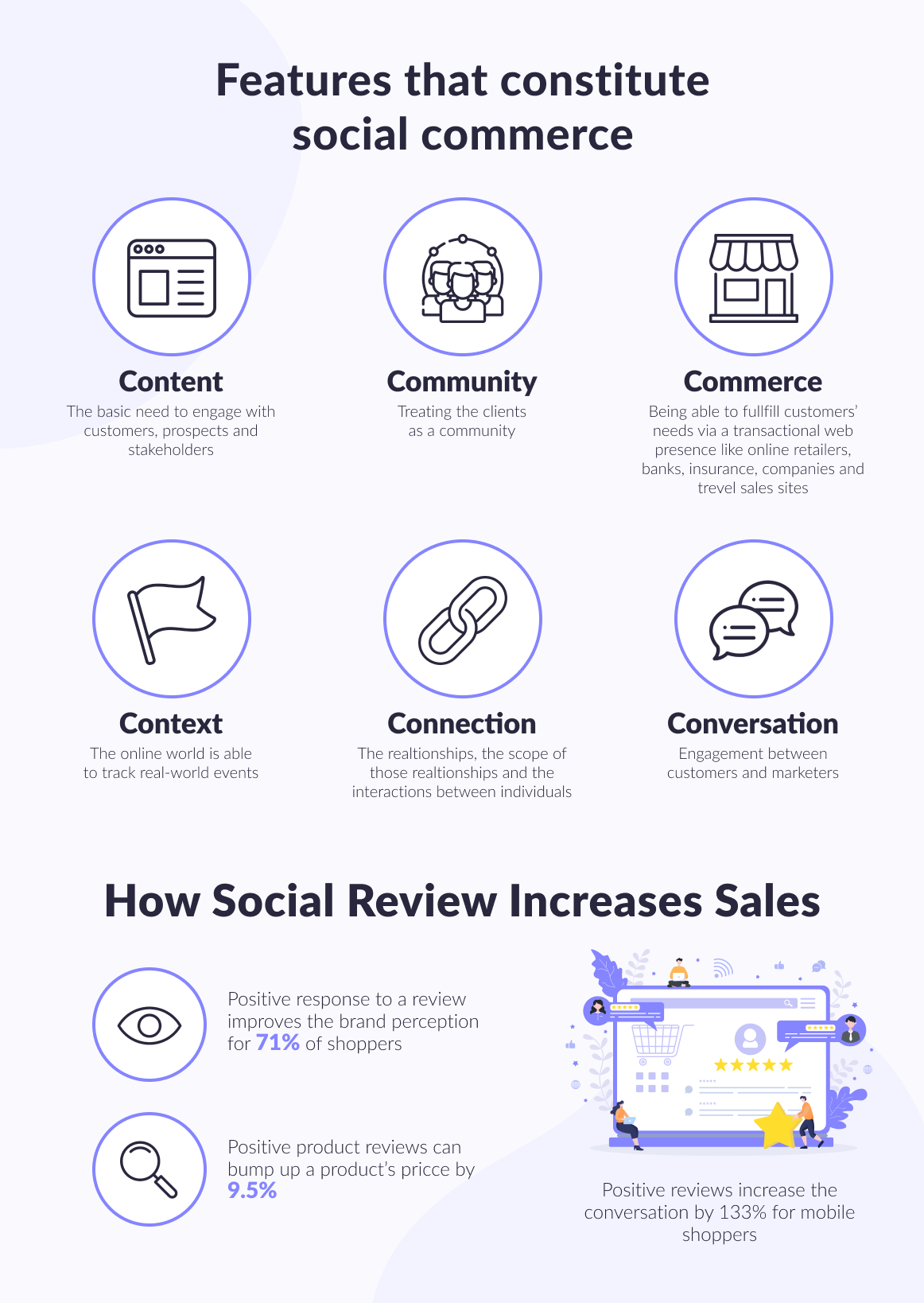
Social commerce will make a significant contribution to Retail. And not only because users from social networks will be redirected to an online store. Sales will be carried out directly on Facebook, Instagram, YouTube, and TikTok — buyers want to place orders as simply and quickly as possible, for example, by clicking on a product while watching a video. Brands are and will be looking for new ways to sell products. Today there are:
- Facebook Shops, shopping tags on Facebook and Instagram;
- the ability to transfer a client from WhatsApp to the catalog using the "Store" button;
Soon:
- YouTube plans to become a marketplace;
- TikTok is testing the ability to add product links to profiles and videos (shoppable video), launches integration with Shopify for direct sales in the future;
- Facebook and Instagram also want to use Shopify for real-time shopping on live streams.
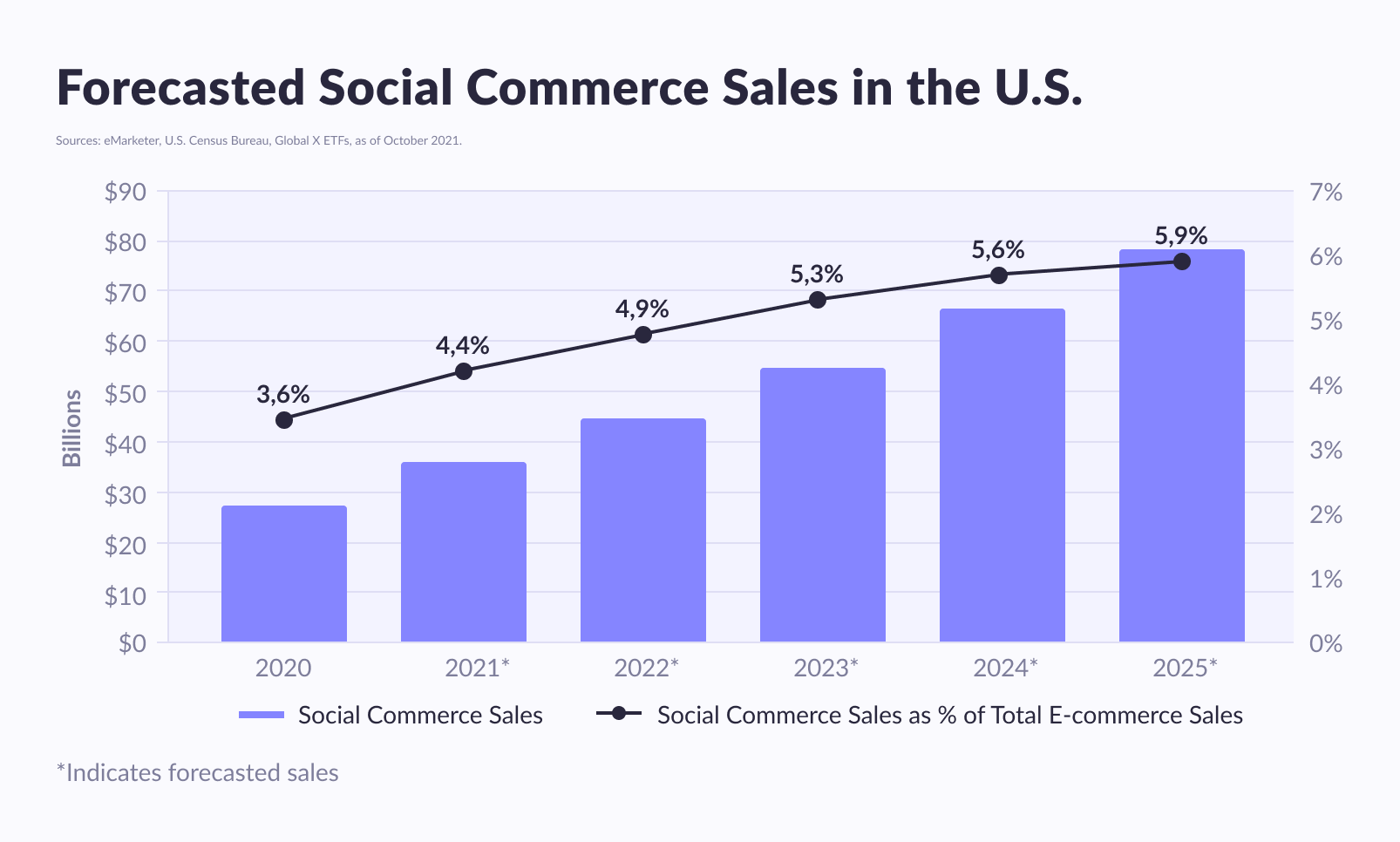
9. Using artificial intelligence to personalize and automate sales
Artificial intelligence and Machine Learning in the online store replace the sales assistant, offering customers individual recommendations based on the history of purchases and behavior on the site. A personalized experience is important for 71% of shoppers — this is a good retention opportunity. Lack of personalization results in poor shopping experiences, in which case most users will not return to the site.
Previously, product recommendations were selected manually and were often irrelevant. Now recommendations are generated automatically and they are as relevant as possible to the preferences of the client (brands, color, budget, and other factors). This is beneficial for everyone — buyers find what they want more easily, and retailers get more sales.
In addition to recommendations, modern tools can predict the desires of new customers based on the preferences of similar users and personalize entire website pages. This helps build long-term relationships. Artificial intelligence helps to track warehouse inventory, optimize marketing strategies, and improve service and communications.
Over time, artificial intelligence will become more useful, and its popularity will grow. In 2022, AI retail spending will quadruple to $7.3 billion. To keep up with the competition, get started with personalization services like RetailRocket, Mindbox, or Criteo.
10. Focus on the younger generation
Since the pandemic, 54% of consumers have started shopping online more. The main contribution to this trend is made by the younger generation (18-34 years old) — in this age group, 67% of users have started to buy more on the Internet. Therefore, if you want to ensure sales, focus on the younger generation when optimizing your online store.
Focus your efforts on social media marketing, where young consumers spend a lot of time. Use new channels for communication — instant messengers and chatbots. Millennials mostly communicate in instant messengers; it is convenient for them to keep correspondence in one place. In addition, representatives of this generation do not like calls.

A real story
Virtual fitting rooms: real case by Geniusee
Find out how implementing new technologies into your business may increase your sales by 20%
Take a lookConclusion
The trends that have emerged and developed in the era of COVID-19 are pushing retail chains to develop and accelerate digital transformation. Retailers need to embrace these changes and keep their outlets up-to-date and tech-savvy with modern retail solutions. This is possible with Geniusee as a software development partner. Our knowledge is based on many years of experience in the field of Retail, marketing research, and big data. Fill out the contact us form, and we will contact you as soon as possible.





















